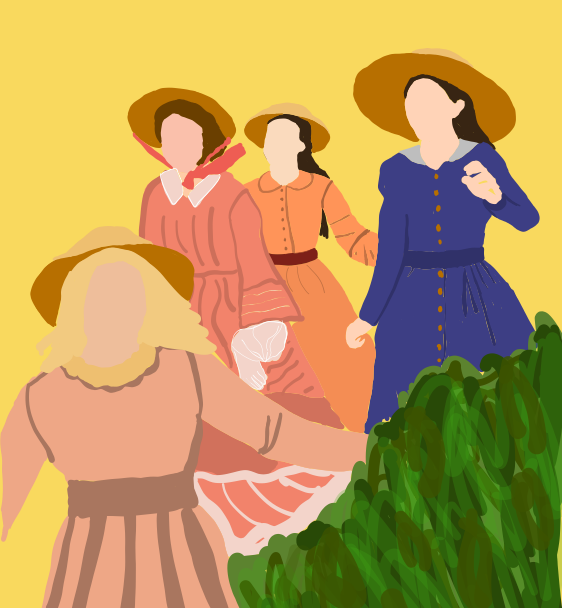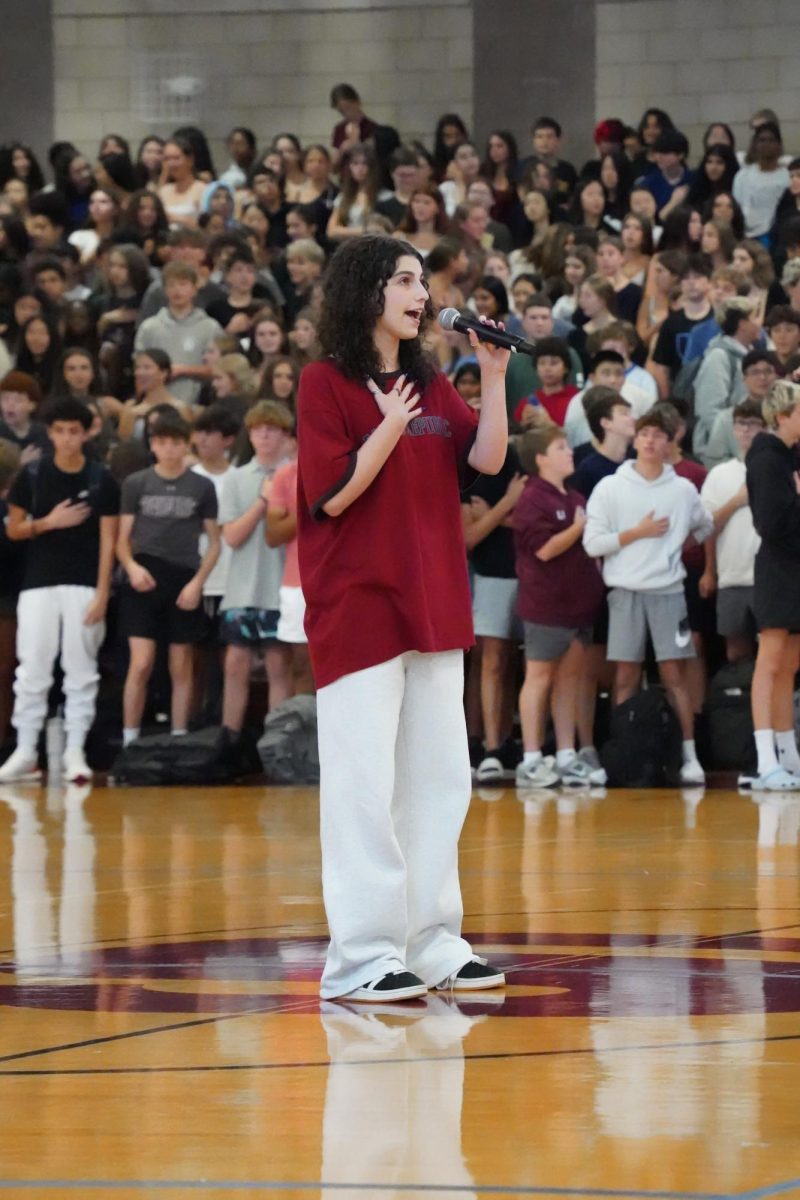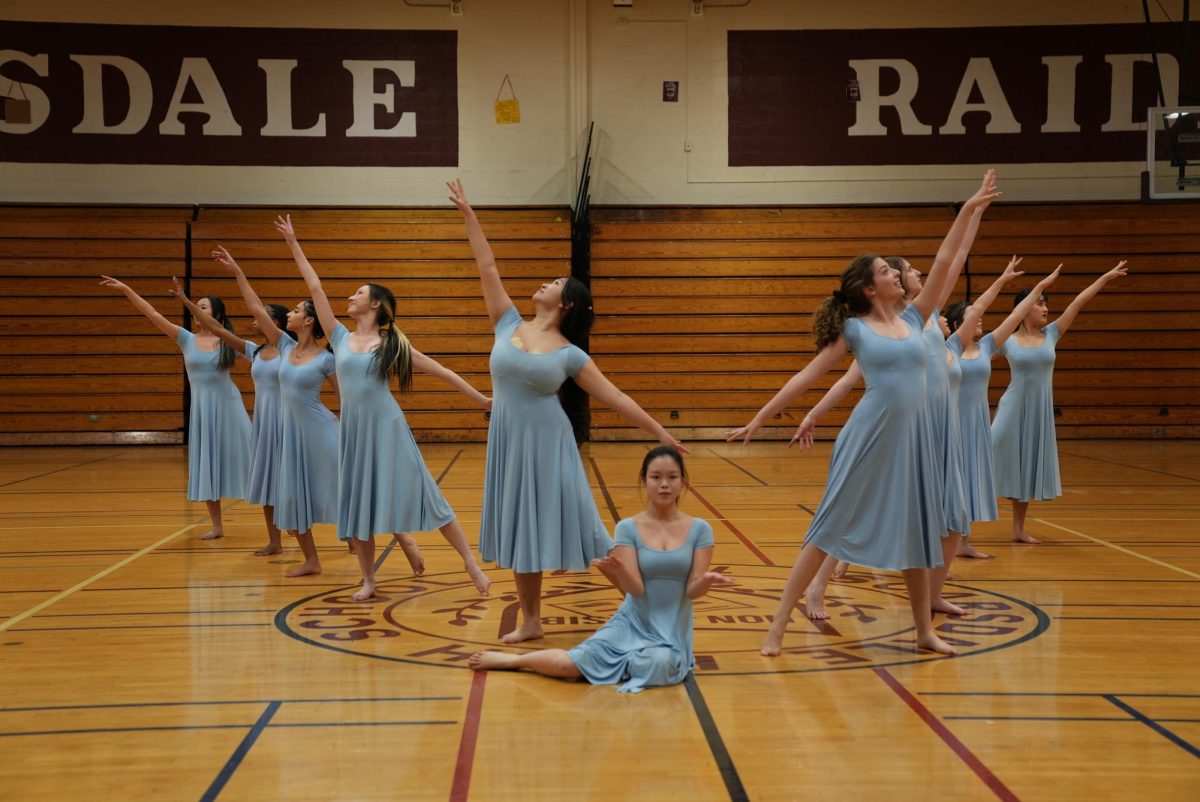Review: A Modern “Little Women”
Little Women, directed by Greta Gerwig, was released on Christmas. The film comes from the famous novel by Louisa May Alcott, published first in 1868.
January 1, 2020
How can a 150-year-old novel that tells the story of four sisters be remade into a film that inspires modern young women today? Director and screenwriter Greta Gerwig pulls this off in her cinematic masterpiece that is Little Women, based on the original book by Louisa May Alcott.
Gerwig makes the artistic choice to tell the story out of order. One might think that this would obstruct the viewer’s understanding of the progression of characters—it doesn’t. In fact, I think that Gerwig’s decision here only adds to the viewer’s concept of how different moments in their lives, the past conversations that Jo has with her mother, or that Amy has with Aunt March, allow each of the girls to grow. This lets Saoirse Ronan’s character of Jo and Florence Pugh’s Amy erupt as the most three-dimensional of the four sisters. Through these conversations, they form their unique opinions on what their roles as ladies are. Each girl understands that they have few opportunities due to the social constructs and traditionalism of the 19th century. The difference between the two is their vision for how to obtain any sense of liberty. For Amy, the answer is obvious from the beginning—marriage, most specifically of the rich. Jo only comes to realize what marriage might give her later. Originally, she sees it oppositely from Amy: something that might inhibit her individualism and freedoms.
While notably less headstrong than Amy or Jo, Emma Watson’s Meg does demonstrate her own conflicts, motivations, and desires. Yes, they might be more traditional than those of Jo and Amy but they are no less complex. Early in the film, she decides to give up any economic opportunity by marrying solely for love. The issues she deals with in the film are less due to her position in society as a woman and more to do with classism. Again, Gerwig’s decision to tell the story in the way she does helps to convey this message, preventing Meg from being swallowed up by her other sisters’ stories.
The one sister that does come off as lacking in dimensionality, however, is Eliza Scanlen as Beth. In both the book and the various movies that have been made to tell the story, Beth exists as a device for other characters to compare themselves to. There is no way to understand Jo’s desires without her constant self-comparison to her angelic sister. Still, kudos to Gerwig—Beth comes off as a little more eccentric through the relationship that is developed between herself and Mr. Lawrence. This helps her to appear less bland and one-sided than she has been portrayed in other film versions of the story.
Arguably the best scene of the two-hour-long film doesn’t arrive until the very end when Jo creates her masterpiece that is the story of Little Women. Inspired by the notebook turned to a page titled “For Beth” laid out in front of her, overcoming her writer’s block, she begins to write her novel. Page by page, filmed shot by shot, the story of her and her sisters’ lives is laid out on the floor of their beloved attic, with the theme of feminism playing into each chapter of their story. This scene does not occur in the book but is added by Gerwig to add a little bit of Louisa May Alcott into the story. Magnified by Gerwig, viewers are left with a deeper understanding of how the March girls have spurred from their small but mighty clubhouse; like the space, they are little but strong women.

























